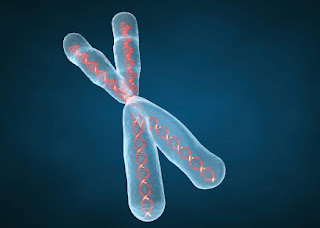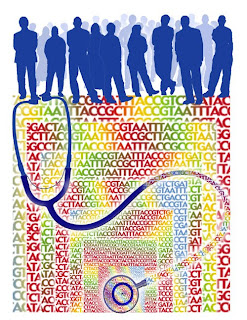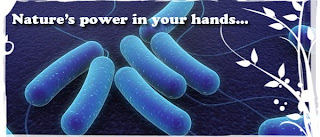Biotechnology terms مصطلحات التكنولوجيا الحيوية
تجميعة لأهم المصطلحات العلمية في مجال التكنولوجيا الحيوية و الهندسة الوراثية يمكن استخدامها كمرجع أو لحل الاسئلة
Amino acid A building block of proteins. There are 20 amino acids, each of which is coded for by three adjacent nucleotides in a DNA sequence.
Anticipation The disease process in which symptoms show up earlier and are increasingly severe in each generation.
Biofilm A slime layer that develops naturally when bacteria congregate on surfaces.
Bioinformatics The field of biology specializing in developing hardware and software to store and analyze the huge amounts of data being generated by life scientists.
Biotechnology The industrial use of living organisms or biological methods derived through basic research; examples range from genetic engineering to making cheese or bread.
Chromatin The organization and dense packaging of DNA in the nucleus of cells.
Chromosome A cellular structure containing genes. Chromosomes are composed of DNA and proteins. Humans have 23 pairs of chromosomes in each body cell, one of each pair from the mother and the other from the father.
Circadian Pertaining to a period of about 24 hours; applied especially to rhythmic biological repetition like the sleep-wake cycle.
Clone In genetics, the process of making many copies of a gene. The term also refers to the isolation and manipulation of a gene.
Comparative Genomics The study of human genetics by comparisons with the genetics of other organisms.
Diploid Having two copies of each chromosome.
DNA Abbreviation for deoxyribonucleic acid, the molecule that contains the genetic code for all life forms except for a few viruses. It consists of two long, twisted chains made up of nucleotides. Each nucleotide contains one base, one phosphate molecule, and the sugar molecule deoxyribose. The bases in DNA nucleotides are adenine, thymine, guanine, and cytosine.
DNA chip See microarray.
DNA polymerase An enzyme that copies DNA.
Enzyme A substance (often a protein) that speeds up, or catalyzes, a chemical reaction without being permanently altered or consumed.
Epigenetics The study of heritable changes in gene function that occur without a change in the DNA sequence.
Eukaryote An organism whose cells have a membrane-bound nucleus.
Exon A DNA sequence in a gene that codes for a gene product.
Gene A segment of a DNA molecule that contains information for making a protein or, sometimes, an RNA molecule.
Gene chip See microarray.
Gene expression The process by which genes are first converted to messenger RNA and then to proteins.
Genetics The scientific study of genes and heredity—of how particular qualities or traits are transmitted from parents to offspring.
Genome All of an organism's genetic material.
Genomics A "scaled-up" version of genetic research in which scientists can look at large numbers or all of the genes in an organism at the same time.
Haploid Having one copy of each chromosome, as in a sperm or egg.
Haplotype A set of closely linked genes or DNA polymorphisms inherited as a unit.
Histone A type of protein found in chromosomes; histones attached to DNA resemble "beads on a string."
Homeobox A DNA sequence found in genes involved in the regulation of the development of animals, fungi, and plants.
Imprinting The phenomenon in which a gene may be expressed differently in an offspring depending on whether it was inherited from the father or the mother.
Intron A DNA sequence, or the RNA sequence transcribed from it, that interrupts the sequences coding for a gene product (exon).
Meiosis The type of cell division that creates egg and sperm cells.
Microarray Sometimes called a gene chip or a DNA chip.Microarrays consist of large numbers of molecules (often, but not always, DNA) distributed in rows in a very small space. Microarrays permit scientists to study gene expression by providing a snapshot of all the genes that are active in a cell at a particular time.
MicroRNA A short piece of single-stranded RNA that does not encode a protein and controls the expression of genes.
Mitochondrion The cell's power plant, supplying the energy to carry out all of the cell's jobs. Each cell contains up to 1,000 mitochondria. The structures contain their own small genomes, called mitochondrial DNA.
Mutation A change in a DNA sequence.
Nucleotide A building block of DNA or RNA. It includes one base, one phosphate molecule, and one sugar molecule (deoxyribose in DNA, ribose in RNA).
Nucleus The structure in the eukaryotic cell containing most of its genetic material.
Pharmacogenetics The study of how people's genetic make-up affects their responses to medicines.
Protein A molecule or complex of molecules consisting of subunits called amino acids. Proteins are the cell's main building materials and do most of a cell's work.
Recombinant DNA Hybrid DNA produced in the laboratory by joining pieces of DNA from different sources.
Replication The process by which DNA copies itself in order to make a new genome to pass on to a daughter cell.
Ribosome The cell structure in which proteins are manufactured.Most cells contain thousands of ribosomes.
RNA Abbreviation for ribonucleic acid, the molecule that carries out DNA's instructions for making proteins. It consists of one long chain made up of nucleotides. Each nucleotide contains one base, one phosphate molecule, and the sugar molecule ribose. The bases in RNA nucleotides are adenine, uracil, guanine, and cytosine.
RNA interference (RNAi) A gene-silencing process in which double-stranded RNAs trigger the destruction of specific RNAs.
RNA polymerase An enzyme that transcribes a DNA sequence, creating mRNA.
RNA splicing The process by which introns are removed and exons are joined together from an RNA transcript to produce an mRNA molecule.
Sequencing Sometimes called DNA sequencing or gene sequencing. Discovering the exact order of the building blocks (see nucleotides) of a particular piece of DNA.
Systems biology A field that seeks to study the relationships and interactions between various parts of a biological system (metabolic pathways, organelles, cells, and organisms) and to integrate this information to understand how biological systems function.
Telomere A repeated DNA sequence that caps the ends of chromosomes.
Transcription The first major step in gene expression, in which the information coded in DNA is copied into a molecule of RNA.
Translation The second major step in gene expression, in which the instructions encoded in RNA are carried out by making a protein or starting or stopping protein synthesis.
Variant A different version of a gene, one that has a slightly different sequence of
nucleotides.




تعليقات
إرسال تعليق
نريد آرائكم و اقتراحاتكم